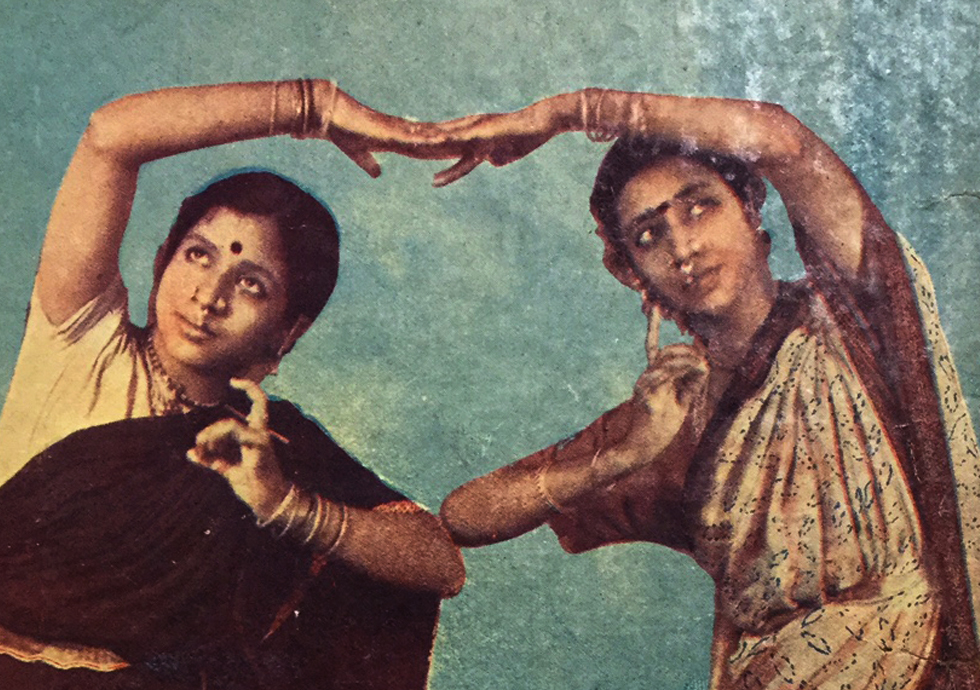Book Of The Month – The Oldest Bharatanatyam Brochure
A Whiff of the Past.
The Music Academy library is presently undergoing extensive digitisation and cataloguing. The process has resulted in some treasures resurfacing and one of these is the book whose cover you see alongside.
Booklet would perhaps be more appropriate for it comprises a mere 14 pages or so. But it is historically significant for it probably is the oldest surviving Bharata Natyam brochure. The Music Academy began the practice of publishing souvenirs for its music festivals in 1935. This is just a year later – dating to December 27, 1936. The dance performance by Varalakshmi and Bhanumati of Kumbhakonam had Papanasam Vadivelu Pillai as the nattuvanar. The inner pages give details of the bill of fare – alarippu, jatisvara in vasanta and tisra tala, sabdam in kamboji set to misra tala, svarajati in huseni in tisra tala, padams in kalyani/rupakam, ananda bhairavi/tisra triputa and saveri/adi, javali (behag/rupakam), tillana, an ashtapadi of Jayadeva and a shloka from the Krishnakarnamrta. The important pieces have their lyrics given in full, with translation into English. Those with solfa syllables and the pure nrtta pieces have explanatory notes on what they are.
The publication was one of the Music Academy’s several attempts at bringing to the fore the beauty and significance of South Indian classical dance. Till then, it had been the preserve of the Devadasis and because it was rarely seen outside the temple and the homes of the rich, it had come to mean something evil. Beginning with the late 1800s there was a move to outlaw the Devadasi system, largely fuelled by the Indians who had been educated in the western mode, complete with Victorian ideas of morality. In the 1920s, this acquired a greater momentum thanks to Dr Muthulakshmi Reddy, who though hailing from the same community, was liberated enough to see its negative aspects. Using her position as the first woman member of the Madras Legislative Council to good effect, she successfully piloted a bill demanding the end of the Devadasi system. There were several safeguards built into it for protecting the economic wellbeing of the erstwhile practitioners. But in reality, none of them received any compensation from the temples that threw them out in haste. The end consequence was that an entire community began moving out of the art.
That is when E Krishna Iyer, the Secretary of the Music Academy, took steps to showcase what South Indian classical dance really stood for. The first of these took place on March 15, 1931 featuring Rajalakshmi and Jeevaratnam, the daughters of Tiruvalaputtur Kalyani and therefore billed as Kalyani Daughters. This performance was at Gana Mandir, Thambu Chetty Street, a portion of what is now known as Rama Rau Buildings and named after Dr U Rama Rau, founder President of the Music Academy. The attendance was small, largely because people feared witnessing dance! By January 3, 1932, when Mylapore Gowri was presented as part of the December Music Festival at a pandal behind Ripon Buildings, the crowd was more. It increased further successively on January 1, 1933 when the Kalyani Daughters performed again and on August 26 the same year when Balasaraswathi was featured.
By the time Varalakshmi and her sister Saranayaki danced on December 28, 1933, once again behind the Ripon Buildings, the crowd was huge. Billed as the granddaughters of Kumbhakonam Gowri, they were part of a larger troupe of cousins, the others being Bhanumati, Sulochana and Pattu. It was universally agreed that Varalakshmi was the best of the lot. She later paired with Bhanumati and was repeatedly presented at the Academy on December 31, 1934 and in 1936 as evinced from the surviving brochure. Somewhere during this journey to present the art to the public, the dance rechristened itself as Bharata Natyam. This was probably in 1932 when we first see this term being used to refer to what was earlier termed variously as Nautch/Sadir/Dasi Attam. Much later, the Music Academy would take credit for coining Bharata Natyam as would others but it must be acknowledged that a resolution to name dance this way does not survive in the Academy archives. Suffice it to say that by the time Varalakshmi and Bhanumati danced on December 27, 1936, it was firmly termed a Programme of Bharata Natyam.
Where did this happen? Those were years when the Congress Party organised a Khadi and Swadeshi Exhibition and put up a music festival in parallel to attract crowds. In 1936, the Music Academy was the official partner for entertainment and held its programmes on General Patters Road, of all places, on the site where the Congress Party headquarters Satyamurti Bhawan now stands. Sadly, this was to be Varalakshmi’s swansong. She died in November 1937 and the Music Academy mourned her passing with photograph in its Season souvenir that year.




